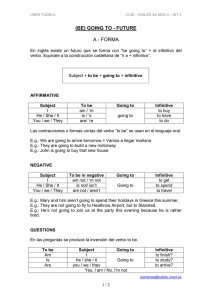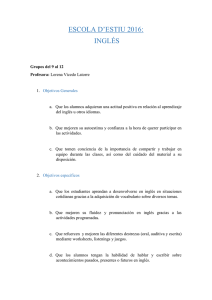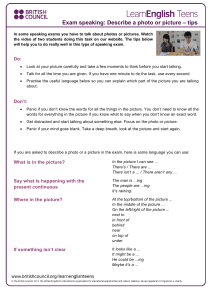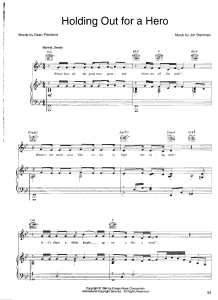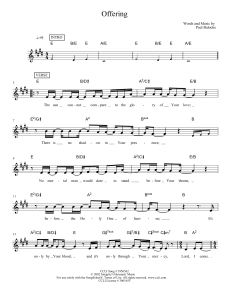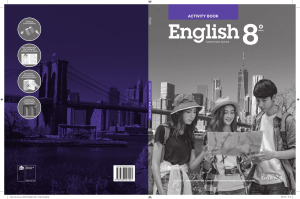PRESENT CONTINUOUS A.
Anuncio
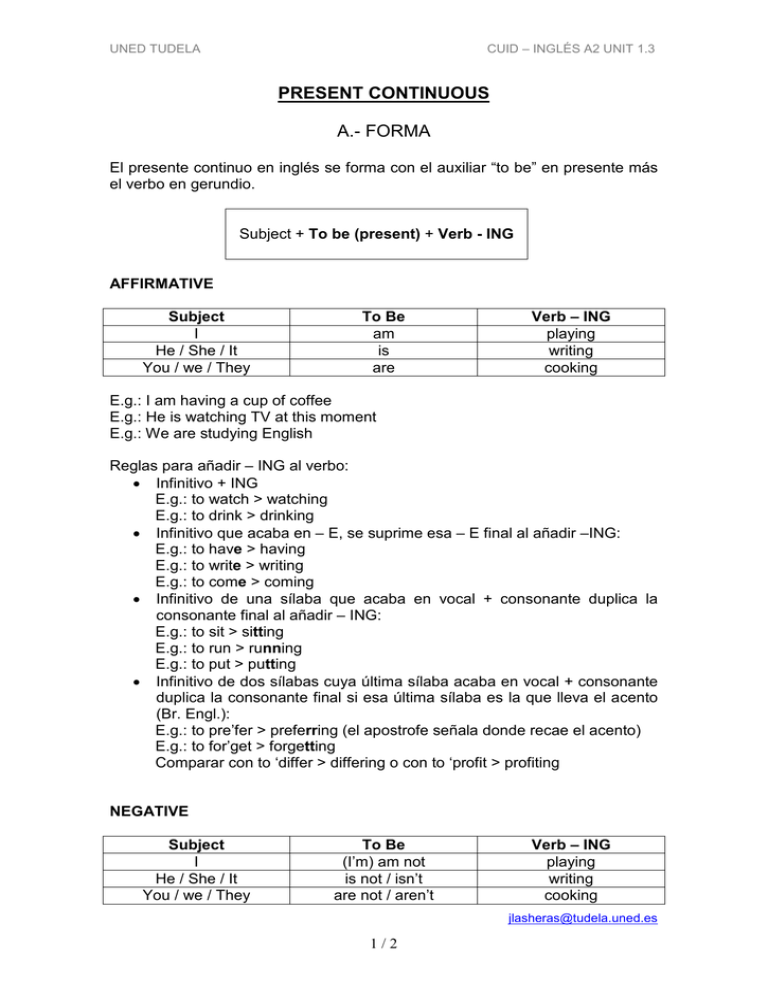
UNED TUDELA CUID – INGLÉS A2 UNIT 1.3 PRESENT CONTINUOUS A.- FORMA El presente continuo en inglés se forma con el auxiliar “to be” en presente más el verbo en gerundio. Subject + To be (present) + Verb - ING AFFIRMATIVE Subject I He / She / It You / we / They To Be am is are Verb – ING playing writing cooking E.g.: I am having a cup of coffee E.g.: He is watching TV at this moment E.g.: We are studying English Reglas para añadir – ING al verbo: • Infinitivo + ING E.g.: to watch > watching E.g.: to drink > drinking • Infinitivo que acaba en – E, se suprime esa – E final al añadir –ING: E.g.: to have > having E.g.: to write > writing E.g.: to come > coming • Infinitivo de una sílaba que acaba en vocal + consonante duplica la consonante final al añadir – ING: E.g.: to sit > sitting E.g.: to run > running E.g.: to put > putting • Infinitivo de dos sílabas cuya última sílaba acaba en vocal + consonante duplica la consonante final si esa última sílaba es la que lleva el acento (Br. Engl.): E.g.: to pre’fer > preferring (el apostrofe señala donde recae el acento) E.g.: to for’get > forgetting Comparar con to ‘differ > differing o con to ‘profit > profiting NEGATIVE Subject I He / She / It You / we / They To Be (I’m) am not is not / isn’t are not / aren’t Verb – ING playing writing cooking jlasheras@tudela.uned.es 1/2 UNED TUDELA CUID – INGLÉS A2 UNIT 1.3 E.g.: The baby isn’t crying now. E.g.: They are not waiting for her. E.g.: He’s not talking to her on the phone. QUESTIONS En las preguntas se produce la inversión del auxiliar to be. To be Am Is Are Subject I he / she / it you / we / they Yes, I am / No, I’m not Yes, he is / No, he isn’t Yes you are / No, you aren’t Verb – ING playing? writing? cooking? E.g.: What are you doing? E.g.: Are you watching the TV? E.g.: Is he using the dictionary? B.- USO • Se utiliza para acciones que tienen lugar en el momento de hablar. A menudo se utiliza con adverbios o expresiones temporales como now, at the moment, etc. Compárese con el Present Simple que se usa para acciones habituales. E.g.: He is working at the moment, so he can’t come to the telephone. E.g.: Someone is knocking at the door. Can you answer it? E.g.: She is wearing a trouser and a blouse today, but usually she wears a skirt and a pullover. Nótese como en castellano esta diferenciación entre el Presente Simple y el Continuo no se da mientras que en inglés es lo que le diferencia a cada tiempo. . • Situaciones temporales que no van a durar mucho tiempo E.g.: What’s your daughter doing these days? She’s studying English at Durham University. • Actividades planeadas en el futuro (igual que “be going to”): E.g.. We are spending the holidays in Australia Este uso del Present Continuous se asocia con futuras llegadas y salidas y suele ir con verbos como arrive, come, go, leave, etc: E.g.: He’s arriving tomorrow morning on the 13.27 train. jlasheras@tudela.uned.es 2/2
